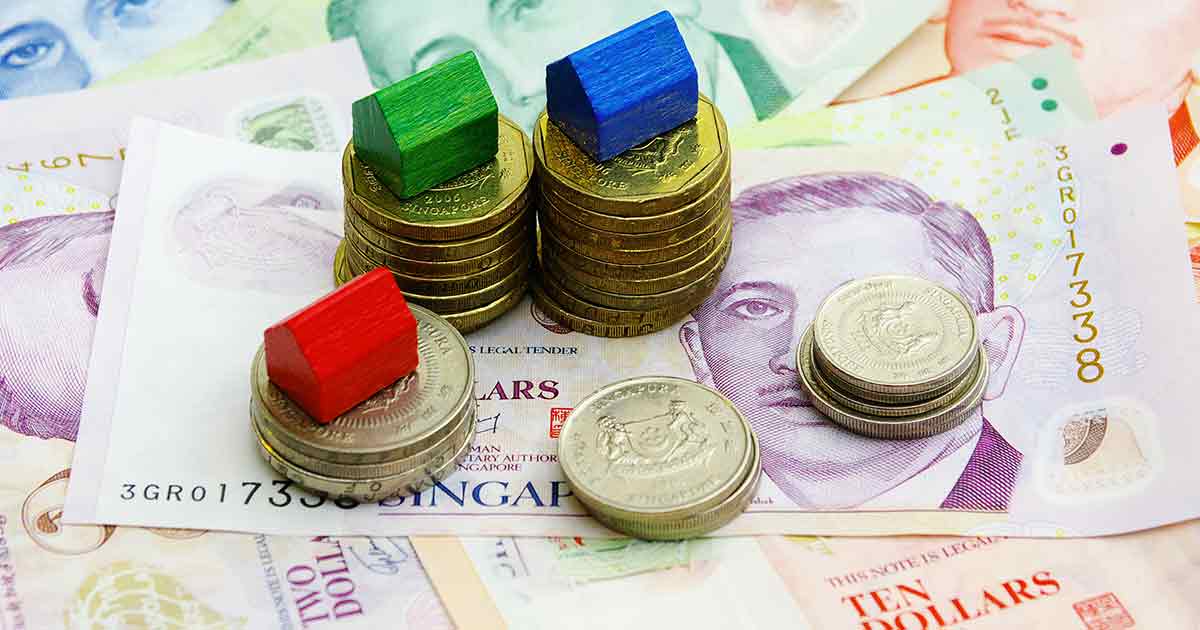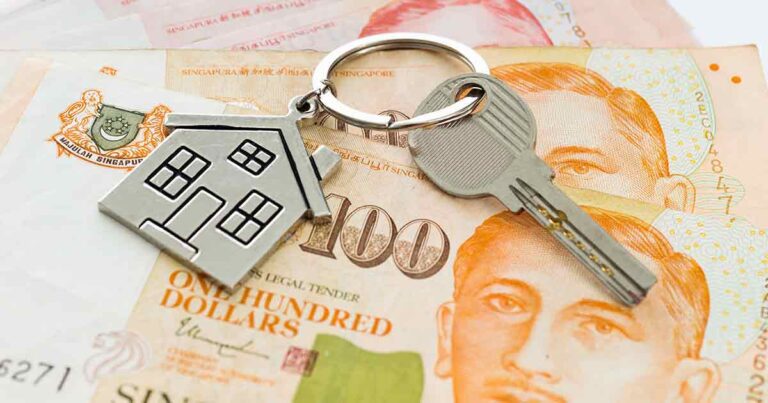Property tax payment in Singapore: A complete guide

This article covers:
Key Takeaways
- Property tax is an annual levy imposed by IRAS on property owners in Singapore, based on the property’s Annual Value (AV), regardless of whether it is occupied or vacant.
- The legal responsibility to pay property tax falls on the property owner, even if the property is rented out.
- Singapore uses a tiered tax system where rates increase with the property’s AV. Different tax rates apply to owner-occupied and non-owner-occupied residential properties.
- Unlike residential properties, commercial and industrial buildings are taxed at a flat rate of 10% of their AV, without owner-occupier discounts.
- Property tax bills are issued in December each year, and full payment must be made by 31 January of the following year to avoid penalties.
- IRAS offers multiple payment options, including GIRO (monthly or lump-sum deductions), PayNow QR, AXS stations and Internet banking.
- A 5% penalty applies to unpaid property tax beyond the due date. IRAS may appoint banks, employers or tenants as agents to recover outstanding amounts.
- Foreigners who own property in Singapore are subject to the same property tax rules as local owners but may also incur Additional Buyer’s Stamp Duty (ABSD) when purchasing residential properties.
The process of buying a property in Singapore does not end when you hand over that hefty downpayment. As a property owner, you are also responsible for the property tax payment: a recurring financial obligation based on the value of your property.
Whether you own a private residence, an HDB flat or an investment property, understanding how property tax is calculated and when payments are due is important for staying compliant and avoiding penalties.
In this guide, we’ll break down how Singapore’s property tax system works, the different tax rates and what you need to do to stay on top of your payments.
What is Property Tax?
Property tax is an annual tax imposed by the Inland Revenue Authority of Singapore (IRAS) on property owners in Singapore. It is based on the annual value (AV) of the property, which represents its estimated rental income if it were rented out.
Unlike other homeownership costs, such as mortgage payments or maintenance fees, property tax is a mandatory government levy that applies regardless of whether the property is occupied or vacant.
The primary purpose of property tax is to generate revenue for public services and infrastructure, including housing, education, healthcare, transportation and road maintenance.
The Difference Between Property Tax and Other Taxes
While property tax is an important financial obligation, it differs from other taxes that property buyers and owners may encounter:
Income tax is levied on an individual’s earnings from employment, business or investments, whereas property tax is based on a property’s annual rental value and applies regardless of the owner’s income level.
Stamp duty is a one-time tax you pay when buying a property. On the other hand, property tax is a yearly obligation that continues as long as you own the property.
If you are dealing with large currency transfers for real estate investments, it’s important to factor in both costs.
Who Has To Pay Property Tax in Singapore?
In Singapore, the responsibility for paying property tax generally falls on the property owner. Here’s a breakdown:
Owner-Occupied Residential Properties
The owner is liable for property tax. This applies whether it’s a landed house, condominium or HDB flat.
When a property has multiple owners, IRAS treats the distribution of property tax payments as an internal matter. As long as the tax is paid in full, they don’t intervene in how owners divide the cost. However, this also grants IRAS the legal authority to pursue any or all owners for the entire unpaid amount.
Rented-Out Properties
Even if the property is rented out, the legal owner remains responsible for paying the property tax. The owner cannot legally transfer the tax liability to the tenant.
However, sometimes the rental agreement may include clauses, such as the tenant reimbursing the owner for property tax. This is a private agreement between the owner and the tenant.
Commercial and Industrial Properties
Businesses or individuals who own commercial or industrial buildings must pay property tax, regardless of whether they occupy or lease them.
Foreign-Owned Properties
Even if you are not a Singapore citizen or resident, you are still required to pay property tax on properties you own in the country.
How is Property Tax Calculated?
Singapore’s property tax employs a tiered system, much like income tax, where the tax rate increases with the property’s Annual Value (AV). Moreover, the specific tax rates and AV brackets are adjusted based on whether the property is owner-occupied or rented out.
In a nutshell, three key factors determine the amount of property tax payable:
- The property’s Annual Value (AV).
- Whether the property is owner-occupied or non-owner-occupied.
- The applicable property tax rate.
Before making large money transfers to pay property tax, make sure that you understand these calculations. Let’s take a closer look at them below.
Owner-Occupier Property Tax Rate
When the property owner lives within their condominium, HDB flat or other residential property, it’s considered owner-occupied.
Here is a breakdown of the 2025 tax rates for owner-occupied properties:
| Annual Value ($) | Tax rate effective from January 01, 2025 | Property Tax Payable |
| First $12,000Next $28,000 | 0%4% | $0$1,120 |
| First $40,000Next $10,000 | -6% | $1,120$600 |
| First $50,000Next $25,000 | -10% | $1,720$2,500 |
| First $75,000Next $10,000 | -14% | $4,220$1,400 |
| First $85,000Next $15,000 | -20% | $5,620$3,000 |
| First $100,000Next $40,000 | -26% | $8,620$10,400 |
| First $140,000Above $140,000 | -32% | $19,020 |
For example, if you live in an executive condominium unit with an annual value of $40,000, here’s how the tax is calculated:
- First $12,000: 0% = $0
- Next $28,000: 4% = $1,120
This means that you should pay $1,120 in property taxes.
Non-Owner-Occupier Residential Tax Rates (Residential Properties)
If a property owner does not live in their condominium, HDB flat or other residential property, it is considered non-owner occupied and taxed accordingly. These properties are typically rented out or held as investments.
| Annual Value ($) | Effective January 01, 2024 | Property Tax Payable |
| First $30,000Next $15,000 | 12%20% | $3,600$3,000 |
| First $45,000Next $15,000 | -28% | $6,600$4,200 |
| First $60,000Above $60,000 | -36% | $10,800 |
Imagine a large apartment rented out, with an annual value of $80,000. Here’s the tax calculation:
- First $30,000 at 12%: $30,000 × 12% = $3,600
- Next $15,000 at 20%: $15,000 × 20% = $3,000
- Next $15,000 at 28%: $15,000 × 28% = $4,200
- Remaining $20,000 at 36%: $20,000 × 36% = $7,200
- Total Property Tax: $3,600 + $3,000 + $4,200 + $7,200 = $18,000
However, certain properties are excluded from the non-owner-occupied residential tax rates. These include:
- Accommodation facilities within sports and recreational clubs
- Chalets
- Child care centres, student care centres or kindergartens
- Welfare homes
- Hospitals, hospices, or facilities for rehabilitation, convalescence, or nursing care
- Hotels, backpackers’ hostels, boarding houses or guest houses
- Serviced apartments
- Staff quarters within properties exempted under Section 6(6) of the Property Tax Act
- Student boarding houses or hostels
- Workers’ dormitories
Commercial and Industrial Properties (Non-Residential)
Unlike residential properties, which may have varying tax rates, non-residential properties such as commercial and industrial buildings are taxed at a flat 10% of their Annual Value. Even if owner-occupied, these properties do not qualify for owner-occupier residential tax rates.
Say you own an office space with an annual value of $100,000, the property tax payable would be $10,000 ($100,000 x 10%).
What Happens When You Own and Occupy More Than One Property?
Keep in mind that only your primary residence qualifies for owner-occupier tax rates. If you own multiple properties, even if you reside in them, only one will receive the preferential rate; the rest will be taxed as non-owner-occupied.
When and How To Pay Property Tax in Singapore
When paying property taxes, you should follow the annual billing cycle and payment deadlines:
- Billing Date: Property tax bills are issued in December for the following year.
- Payment Deadline: The tax must be paid in full by 31 January of the assessment year.
For example, your 2025 property tax bill will be sent in December 2024, and payment must be made by 31 January 2025. Late payments may result in penalties, so it’s important to settle your dues on time.
If you’re experiencing financial hardship, you can request an extended payment plan through the ‘Apply for payment plan‘ e-service on the myTax Portal, accessible with your Singpass.
How to Pay Property Tax
IRAS offers several convenient property tax payment methods to ensure a smooth and hassle-free transaction.
GIRO is the most efficient way to pay your property tax as it allows automatic monthly deductions from your bank account.
- One-time Setup: Apply via your bank’s online banking portal or through IRAS’ myTax Portal.
- Monthly Deductions: Payment is spread across 12 interest-free instalments, or you can opt for a one-time deduction on January 6 of the payment year.
- Processing Time: Approval usually takes 14 working days.
To ensure your property tax is successfully deducted via GIRO, please verify that your bank account has sufficient funds on the deduction date and that your payment limit is adequate. Be aware that some banks may charge fees for failed GIRO transactions.
You can pay instantly by scanning a PayNow QR code using your mobile banking app. Here’s a step-by-step guide:
- Log in to myTax Portal using Singpass or Corppass.
- Go to Account and select Pay Taxes.
- Find the Tax Type you wish to pay and click ‘PAY’ next to it.
- Choose ‘PayNow QR’ and click ‘Continue’.
- A QR code will be generated along with a countdown timer.
- Complete the transaction within 15 minutes to be redirected to the acknowledgement page.
- If you miss the 15-minute window, you can still use the generated QR code until the end of the next day.
- If you are using a mobile phone, take a screenshot of the QR code for later use.
- Open your mobile banking app on your phone.
- Scan or upload the generated QR code using your mobile banking app.
- If you took a screenshot of the QR code in Step 4, upload it from your phone’s photo gallery.
- Approve the payment through your mobile banking app.
- If your bank account requires dual control, inform the authoriser(s) to approve the payment.
- Once the payment is successfully processed:
- The page will refresh, and you will see a Successful Payment acknowledgement page.
- The payment will be immediately reflected in your tax account.
To protect yourself from scams, remember that IRAS will never send you PayNow QR codes directly through emails, texts, letters or messaging apps. You can only create a legitimate payment QR code yourself by logging into the official myTax Portal or using the ‘Make Tax Payment’ feature on the IRAS website chatbot. Stay vigilant and avoid clicking on QR codes from unknown sources!
AXS kiosks provide an easy way to make payments using NETS or bank cards.
- Visit any AXS self-service station islandwide.
- Select Property Tax Payment and follow the on-screen instructions.
- Make payment using NETS, credit card or debit card.
- Obtain a payment receipt as proof of transaction.
Online banking allows you to transfer funds directly from your bank account to IRAS.
- Log in to your online banking account.
- Select Bill Payment and choose IRAS Property Tax as the payee.
- Enter the property tax reference number (found on your bill).
- Confirm and complete the payment.
- Payments may take 1 to 3 working days to reflect in your IRAS account.
What Happens If You Miss the Payment Deadline?
According to the IRAS, failure to pay your property tax on time may result in:
Late Payment Penalty
If your property tax is not paid in full by the due date, a 5% penalty will be added to the outstanding amount, unless you have an approved payment plan.
Appointment of Agents
If the tax remains unpaid, IRAS may appoint agents—such as your bank, employer, tenant, lawyer or other third parties who owe you money—to recover the outstanding amount.
If your bank is appointed as an agent, you may face restrictions on your bank accounts, such as being unable to access funds, until your Property Tax is fully paid. Agents will only be released once all outstanding taxes and penalties have been paid in full.
Final Thoughts
Buying a home in Singapore is no small feat. The skyrocketing prices and additional costs like stamp duties and legal fees make homeownership a heavy financial commitment. On top of that, property tax is an ongoing expense that every homeowner must account for.
Understanding how tax rates are determined, when payments are due and where to pay property tax ensures you remain compliant and avoid unnecessary penalties.
And if you’re ever uncertain about your tax liability or need assistance with payment options, IRAS provides multiple resources to guide you. A little preparation goes a long way in keeping your finances in order and ensuring peace of mind as a property owner in Singapore.
Make property tax payments from overseas or large international money transfers with Instarem. With competitive exchange rates and low transfer fees, Instarem offers a cost-effective way to transfer large amounts of money to Singapore, ensuring your tax payments reach IRAS without unnecessary delays or excessive charges.
FAQs
How often do you pay property tax in Singapore?
Property tax in Singapore is paid annually. The tax is based on the property’s Annual Value (AV) and must be paid by January 31st each year. IRAS issues the property tax bills in December, giving homeowners ample time to make their payments.
Do foreigners pay property tax in Singapore?
Yes, foreigners who own residential or commercial properties in Singapore are required to pay property tax, just like Singaporean citizens and permanent residents. However, foreigners who purchase residential properties may also be subject to Additional Buyer’s Stamp Duty (ABSD) on top of the standard property tax.
Can property tax be paid by CPF?
No, CPF savings cannot be used to pay property tax. Property tax must be paid using cash, bank transfers, GIRO or online payment methods. CPF can only be used for mortgage payments, down payments and some legal fees related to home purchases.
























